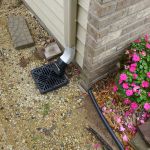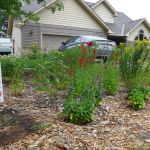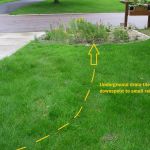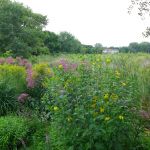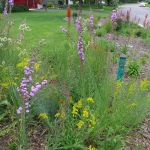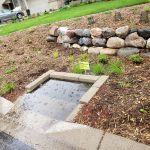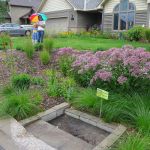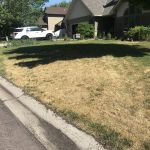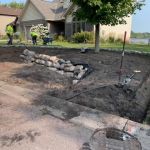Neighborhood Spotlight: Sigmon-Olsen Family
When Megan and her family started looking into replacing turf with native plants, they didn't realize they'd soon be investing in a neighborhood conversation starter. Throughout the pandemic years of 2020 and 2021, Megan explored new projects to add texture, habitat, and color to the yard while also supporting her downstream connections to Lambert Creek. Whether during National Night Out or a chat with a local pet walker, Megan reports many great conversations about bees, butterflies, and the simple joys of watching the raingarden ebb and flow with the weather. VLAWMO is thankful for Megan's efforts that add upstream storage for Lambert Creek and soil health benefits next to the Rice Lake wetland.
Raingarden chat with Megan:
What motivated you to go the direction of a rain garden for your yard?
We installed a small drain tile raingarden in order to reduce roof runoff in 2019. We live on a shallow lake/wetland that receives stormwater runoff from our surrounding neighborhood and drains into Lambert Creek. We hoped to support this connection, then installing this first rain garden inspired me to do more for the health and wellbeing of plants, wildlife, and water in our area.
How did the new raingarden blend with your existing plantings and yard features?
It changed our yard in a big way, reducing our turf grass by 30%. I had previously changed all of the plants in our yard to native plants, so adding these native plants only complimented what I previously planted. It was nice to reduce the amount of grass.
What do you enjoy most about the raingarden?
Seeing it fill up. It takes in a shocking amount of water! We enjoy the educational aspect, too. My kids play in the rain and are aware that our rain garden is helping clean polluted water, as well as restore groundwater. We have taught them not to play inside the rain garden in order to avoid compaction of the soil (which would decrease the rain garden’s ability to take in water) as well as to avoid exposure to environmental pollutants which flow directly into our rain garden. I also love the beautiful flowers, of course.
How has it changed your interaction with your yard?
We are outside A LOT more during rain storms! It is shocking and fun to see how much water it takes in. Wildlife has increased a great deal, too. I can be found randomly staring at my raingarden at any given moment. I am really observing insects and animals that you need to slow down to notice.
Has it changed your interaction with the street through the curb-cut?
We talk with people walking by a lot more. People are curious and do not understand why we would want to invite the water into our yard/”close to our house”. This opens up conversations on what a safe distance from the house is and how it helps downstream. People are also talkative because they don’t know the plants that we have and ask a lot of questions about why we have so many butterflies.
Is it working as you envisioned? What’s the most challenging part of it?
Yes! It is working so well! The most challenging part is managing my sadness during winter when I can’t see all of my plants and rainwater.
What has surprised you along the way?
How truly beautiful my plants are and what they attract! They are colorful throughout the year and the wildlife love them. The amount of Monarch butterflies, Swallowtail butterflies, hummingbirds, snowberry clearwing (aka hummingbird moths) and other beautiful insects has neighbors stopping to see how they can get these beautiful creatures to visit their yards.
What would you do differently if you could do it all over again?
Do it sooner! I worried about the process a bit too much before getting started. Once we started, it went very well. We also had to wait quite a long time as companies who work on native residential raingardens are somewhat limited. They are busy and schedule out for months.
Any advice for other folks who may be interested in this style of raingarden?
Please do it! The wildlife in your area will thank you, as will the water that fills our lakes. You will get to see beautiful flowers and will have lots of conversation with people who are curious. Our community could use A LOT more raingardens!

